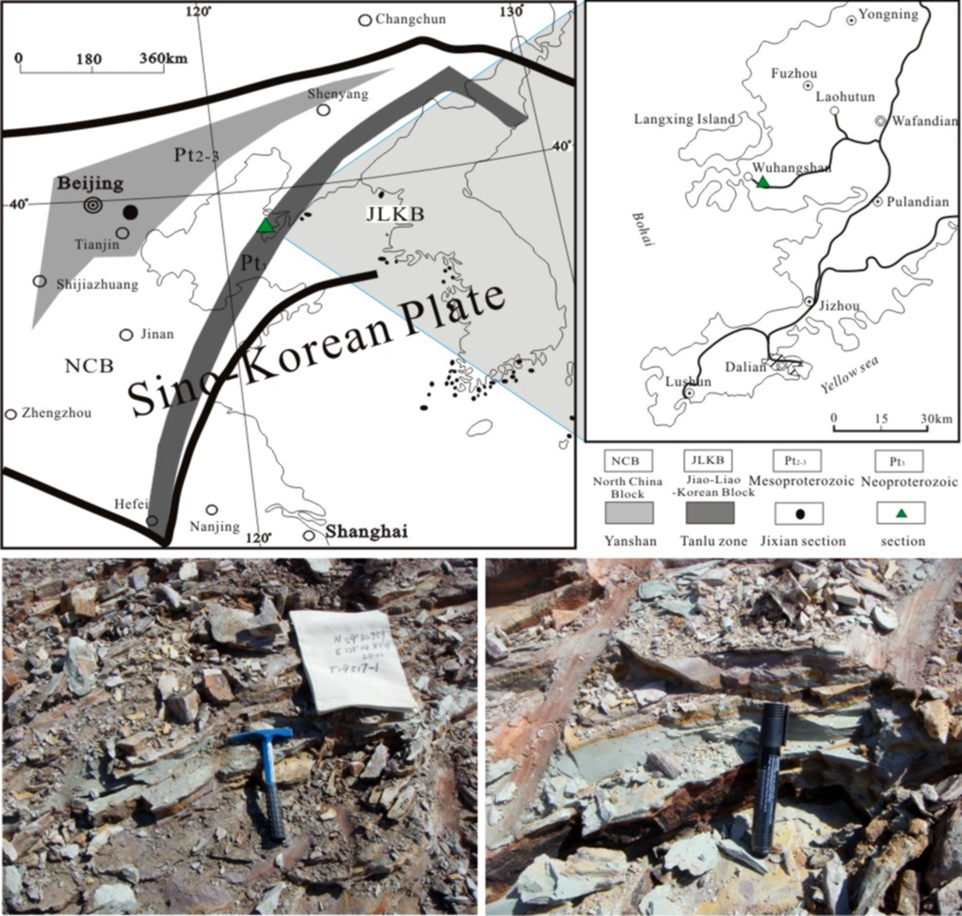Diaoyutai Fm
Type Locality and Naming
Northeast Liaoning. The name Diaoyutai Fm is derived from the Diaoyutai Quartzite as named by Aoji in 1928. The naming section is located along the Xihe River and the typical section is in Dafangzi, Benxi, Liaoning Province.
[Figure: The Diaoyutai Formation in Liaodong Peninsula and sampling in the Changxing Island]
Synonym: (钓鱼台组)
Lithology and Thickness
The Diaoyutai Fm is dominated by grayish white to light brown, medium to thick-bedded quartzose sandstone. Lower part consists of grayish white quartzose sandstone, the Middle part is yellowish green to purple silty shale, and the Upper part is composed of grayish green glauconitic sandstone. Its thickness varies from 57 to 656 m.
Relationships and Distribution
Lower contact
In Fuzhou area, the Diaoyutai Formation rests conformably or disconformably on the underlying the Yongning Gr
Upper contact
In Benxi area, it overlaps the Archean migmatitic granite or Paleoproterozoic strata, commonly with the basal conglomerate. The quartzose sandstone in upper part is so pure that it can be mined as the raw material of glass.
Regional extent
The Diaoyutai Formation is distributed in the Hunjiang River drainage area in south Jilin, the Taizi River drainage area in east Liaoning and Yingkou, Lushun, Fuxian area.
GeoJSON
Fossils
It yields microplants: Leiopsophosphaera minor, L. densa, L. aff. effusa, Trachysphaeridium planum, T. incrassatum, T. rugosum, T. simplex, T. cultum, T. cf. laminaritum, T. stipticum, Stictosphaeridium sp., Dictyosphaera sp. etc. Macroscopic algae fossils: Chuaria circularis, Shouhsienia shouhsiensis etc.
Age
Depositional setting
The Diaoyutai Formation has inclined beddings, cross- beddings and ripple marks.
Additional Information
